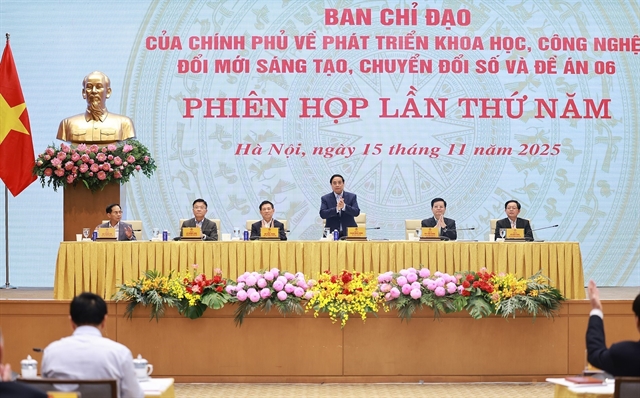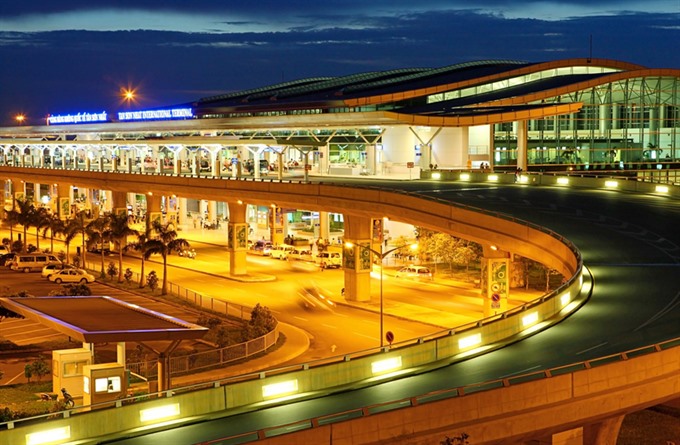 Society
Society

HCM City early next year plans to seek the Prime Minister’s approval for a US$276 million metro-line project to Tân Sơn Nhất international airport, the country’s busiest airport, in Tân Bình District.
 |
| Tân Sơn Nhất International Airport in HCM City. The city plans to build a 2km metro route from Hoàng Văn Thụ Park to the airport, with the aim of reducing congestion near the airport area. — Photo courtesy of the airport authority |
HCM CITY — HCM City early next year plans to submit for approval to Prime Minister Nguyễn Xuân Phúc a US$276 million metro-line project to Tân Sơn Nhất international airport in Tân Bình District, the country’s busiest airport.
Construction of the 2km metro line, which would run from Cộng Hòa Street in Tân Bình District to the airport, is expected to start in 2019 if everything goes smoothly, city authorities have said.
South Korean consultants have finished the preliminary feasibility study, according to the HCM City Management Authority for Urban Railways (MAUR).
The metro route, which will link Hoàng Văn Thụ Park with the airport, will include two underground stops at the park and at the international terminal. An underground pedestrian tunnel will also be connected with the domestic terminal.
The metro station at the airport, which will have three basements, is expected to serve 3,366 people a day by 2043, according to the feasibility study.
The Hoàng Văn Thụ Park station will also have three basements, with the second basement connected to metro line No 5 (from Bảy Hiền intersection to the new Cần Guộc Bus Station).
The metro station will serve about 3,429 people a day by 2043, according to the feasibility study.
Of the estimated $276 million cost, South Korea will lend 90 per cent of the total investment with the remainder coming from the State budget.
The plan will be submitted to the PM in the first quarter of 2017. Construction is expected to begin in 2019, with completion in 2024.
The new metro line aims to reduce traffic congestion at the area around the airport, which was not initially included in the approved metro plan by the Government, according to MAUR.
In recent years, the number of people coming to the airport has been increasing rapidly, worsening traffic at roads leading to the airport.
The HCM City People’s Committee has also asked the Ministry of Planning and Investment to approve technical consultancy from South Korea.
Urgent need
Around 269,000 passengers and other visitors go to the airport every day, with the number of people going to the international terminal more than 144,000, according to MAUR.
Lê Khắc Huỳnh, deputy head of MAUR, said that it was essential to build the metro link to the airport as the demand for air travel had increased significantly and most roads leading to the airport were overloaded.
Dr Phạm Sanh, a traffic expert, said the metro route and link were necessary but the city must study the projet carefully to prevent waste of capital.
Sanh explained that, in addition to newly expanded roads leading to the airport, there will be more overpasses in this area.
He said there should also be more links to other parts of the city from the airport to prevent congestion at the airport area.
Nguyễn Văn Tám, deputy director of the city’s Department of Transport, said the metro route was expected to meet the high demand of passengers in the city’s urban districts.
When the current airport is moved to Long Thành international airport in the southern province of Đồng Nai, it would still be necessary to build the metro route because of high travel demand in the area, he said.
Prof Lê Huy Bá, former head of the Institute of Science and Technology and Environment Management of the HCM City Industry University, said the city must consider the project carefully as it would be difficult to make use of only 2km of metro.
Because the Tân Sơn Nhất airport area is a flood-prone area, MAUR must carefully study the technical construction requirements for the 2km metro line.
Otherwise, it would be too costly and time-consuming to maintain the metro line after it is built, Bá said. — VNS




